How To Create Non Objective Art
What Is Abstract Art?
Maybe you've taken a look at a work of abstract or non-objective art and gotten confused. Maybe you said to yourself, "How is this art?" or "Why is this art?"
Maybe abstract art or non-objective art has even angered you. Perhaps you've thought to yourself, "Anyone can do that!" Or perhaps, "That's not art!"
The problem with abstract art is that most people simply don't take the time to understand it or appreciate it. They simply look at the skill required to physically paint and draw the image and that's how they evaluate it.
The truth is that the skill involved in abstraction is not in the application of the medium. The true skill is in the vision of the artist and how they communicate through the works they produce.
It's easy to miss the skill that exists in abstraction and non-objective art if you don't understand what's going on. So let's dive a little deeper with an open mind.
Different Forms of Art
The world of art is vast – with many different styles, movements, mediums, and artists. It's rather easy to become overwhelmed and confused. But fortunately, this expansive world can be simplified. All works of art will fall into one of three categories. An artwork is either representational, abstract, or non-objective.
Representational Art
As the name implies, representational art seeks to replicate the observed world. When the intent is to create a representational work of art, the artist is concerned with proportion, the light source, depth and space, perspective, realistic textures and so on. The artist uses the elements of art to fool the eye of the viewer and to create a convincing illusion in a drawing or painting.
There are various degrees of representational art – but for now – let's consider it as one category. (For some people, this is the ONLY form of art in their mind, but there is more to discover and appreciate.)
Abstract Art
The most misunderstood form of art is abstraction. Abstraction occurs when the intent of the artist is to create an altered depiction of the subject or concept. The rules of representational art may be thrown out completely, if so desired by the abstract artist. In this form of art, the artist uses the elements of art to distort how we see the object in reality. This can be accomplished in a number of ways – simplification, color alteration, altered views and so on.
With abstract art, the artist starts with a concrete subject from reality, even though the subject may not be fully recognizable in the finished work.
Non-Objective Art
The third category of art is termed "non-objective". This form of art differs from representational art and abstract art in that it takes nothing from reality. The sole intent is to produce a piece of visual work that is created purely for aesthetics. While an abstract work may appear similar to a non-objective one, the starting point and the intent of the artist is different. For this reason, non-objective art gets its own category.
The Earliest Forms of Abstract Art
To understand abstract art, we must first look at the history of how it came to be.
Abstract and non-objective art have existed as long as art itself. Cave paintings like those from Lascaux, France are abstract. These flat, simplified animal shapes would inspire artists thousands of years later, during the twentieth century. The abstraction lies in the simplicity. This means that the earliest and oldest forms of art are works of abstraction.
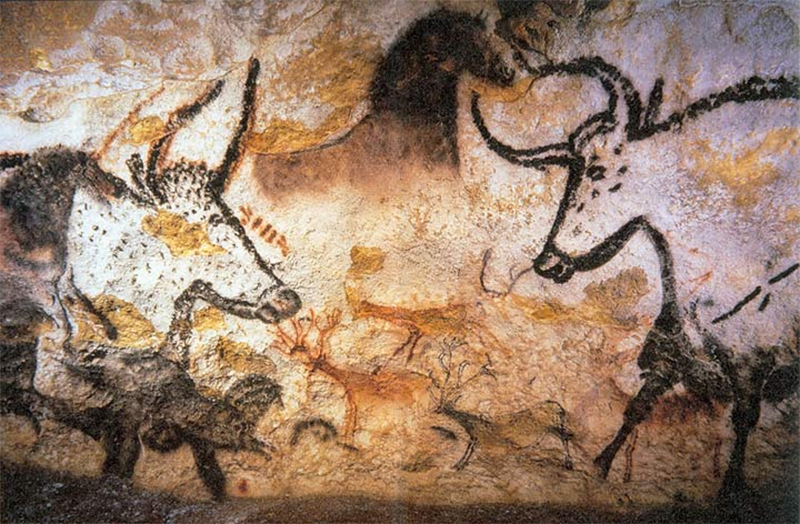
Abstract and non-objective art later dominated the early twentieth century. In the preceding centuries however, most artists worked toward a representational depiction of their subject.
To understand abstract and non-objective art, one must first consider representational art. Often referred to as realism, representational art attempts to copy the natural experience of seeing. The prefix, "re", means again. The root word, "present" can mean to show. So, one is "showing again" what was first seen when working representationally – a copy of nature.
In the early twentieth century, abstract art was a response to representational art. Abstraction is changing the natural way of seeing something. Distorted proportions, unnatural colors and the simplification of shapes are just a few ways an artist might change how a certain subject is depicted.
A Painting is a Painting
In 1929, Magritte completed his influential and controversial painting, "The Treachery Of Images". In this painting, Magritte presented a realistic painting of a pipe with the words underneath, "Ceci n'est pas une pipe." Translated from French, these words read, "This is not a pipe."
For those of us stuck in the world of realism, this statement may be extremely confusing. After all, we can clearly see that it is a pipe in the painting – right?
But is it a pipe? Can you stuff tobacco in it and smoke it? Can you hold it in your hand?
You can't do any of these things because it is NOT a pipe. Instead, it is a painting of a pipe.
This painting can help us better understand and appreciate any form of art created outside the realm of realism. A painting is a painting. A painting is not the reality it attempts to copy. It doesn't have to be derived from reality in order to be a successful painting. A painting can be anything we want it to be. It doesn't have to mimic reality.
With this concept in mind, we can open ourselves up to the world of abstraction and non-objective art. We must remove ourselves from the fact that a painting or drawing must be representational to have merit. Let's first dive a little deeper into abstract art.
Abstract Art Definition
Change is at the center of abstract art. Abstraction is a form of a changing the subject in a manner that is different than how it is viewed in reality. It can be as simple as changing the color; or as complex as changing the subject so that it is completely unrecognizable.
The merit found in abstract art is two-fold. One can appreciate how the artist has changed the subject, but also the formal qualities of the resulting work.
In some cases, we may not know the thought process behind the abstraction, but we can appreciate the resulting work – the color relationships, the composition, the use of the elements and principles of art, etc. But in some cases, we may know the intent of the artist and how they have decided to change the subject – which gives us another way to evaluate the piece.
For people that do not understand the purpose of abstraction, it's easy for them to dismiss it as a lesser form of art – especially if they judge it based on how representational an artist makes their work. However, once you dive deeper into the meaning and purpose of abstraction, we can better appreciate it. You may even find that you have an even greater appreciation for it when you try to do it yourself.
Comparing the Various Forms of Abstraction
As mentioned before, there are various degrees of abstraction in art. Visual abstraction is best understood as existing on a continuum. Imagine a line. At one end of the line is photorealistic artwork. At the other end is non-objective artwork with no recognizable, nameable subject matter. Abstract art lies in the middle, somewhere between representational art and non-objective art.
There are points along this line representing varying degrees of abstraction. Take your favorite cartoon. Does the cartoon include black outlines? Lines are abstract. Think about it. There are no lines in "real life". There are only edges of color and value. Using a line to define a contour is actually a change from the natural way of seeing.
Does that mean that a cartoon is abstract art? Not exactly, but it does mean that cartoons are stylized. Think of stylization as the first stop along the way to abstraction.

The continuum above is an attempt to organize a few artistic movements according to their degrees of abstraction. The artists and Movements on the line are not in chronological order. Farthest to the right is Chuck Close, a photorealist. His artwork has evolved over time but the work he was producing in the late sixties and early seventies defined photorealism, the most representational art thus far. Both Winslow Homer and Claude Monet represent movements in the 1800s, during which time artists worked representationally. The following painting by Monet used value and color to create a believable, realistic space.
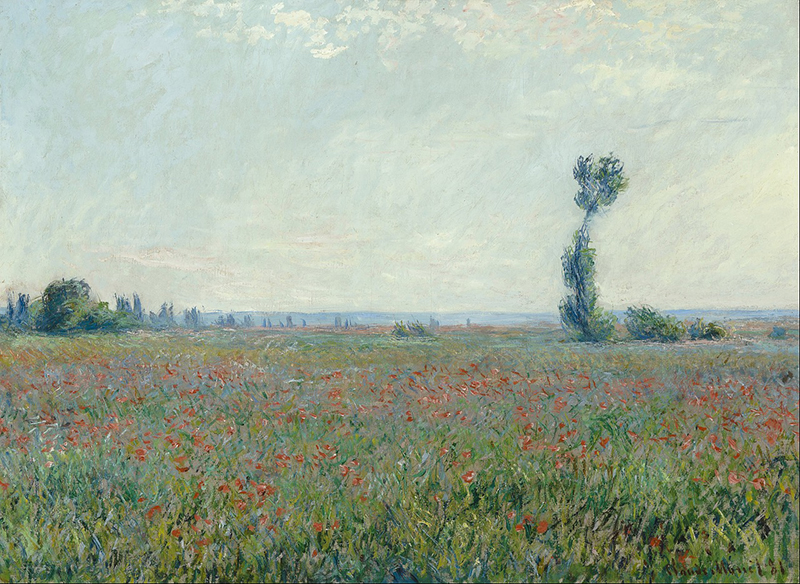
The point at which Paul Cezanne appears on the continuum marks a turning point in art history. Paul Cezanne is often referred to as the "Father of Modern art". Cezanne's art (seen below) has a flat quality that artists that followed would emphasize. See how the plate on the left looks more round than the plate on the right. They do not appear to belong in the same space together.
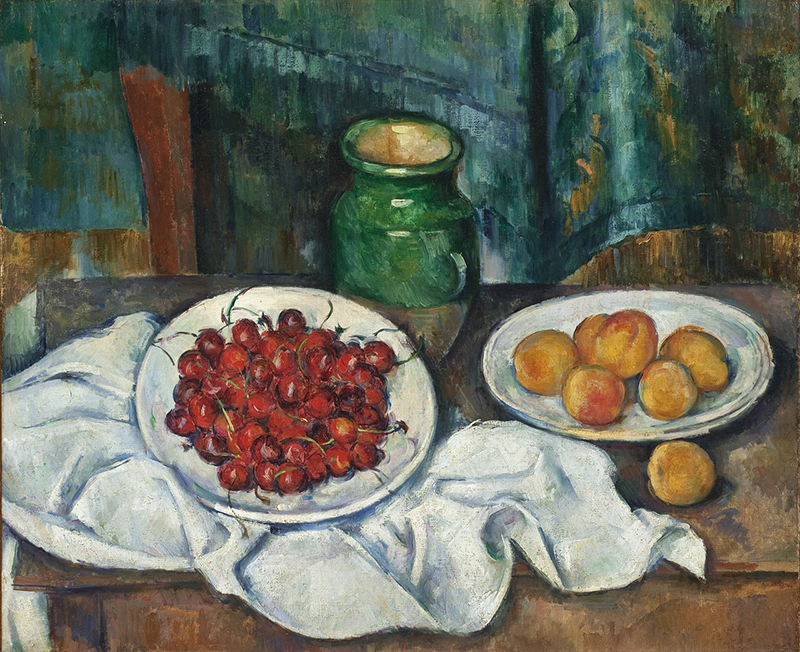
Moving leftward on the continuum, Precisionist artists such as Charles Demuth and, to a lesser degree Georgia O' Keefe, painted easily recognizable abstract imagery. Both would "zoom-in" to their subjects, reducing the distinction between foreground, middle-ground and background.
Instead, their subjects seem crammed up against the surface of their picture plane, again, created a sense of flatness. Additionally, Demuth would draw long straight lines right through his compositions to make new shapes (see below). In this way, he was taking something from reality and changing it.

Deeper into the world of abstraction is Pablo Picasso. A cofounder of Cubism, Picasso would paint his subject from several points-of-view at once. Think of a cube. It has six sides but one can only see, at most, three at a time. Knowing that the other three sides exist, Picasso might have painted some of them. Picasso's way of changing reality was to paint more than what is visible from a single point of view.
Look at the image below. It is a still life painted in the cubist style. The yellow vessel is round on top but flat on its bottom. The top of the vessel represents the view from above while the bottom is a view from the side, all at once. Also, the tomatoes are painted from points-of-view that eliminate the overlapping seen in the reference photograph. Less overlapping adds to the flat quality of the image. Compare the painting to the reference photograph.

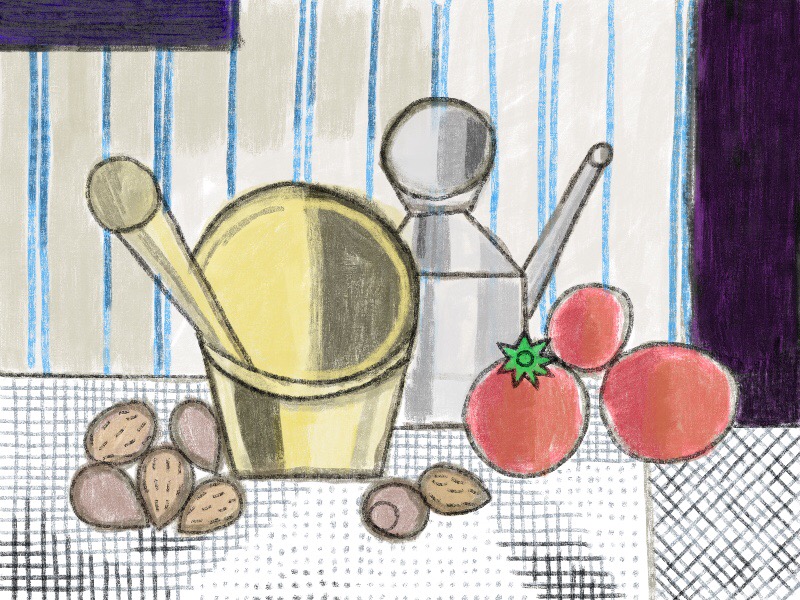
Still further left on the continuum we find Willem de Kooning and other abstract impressionists. These artists are more interested in the quality of their paint strokes than the depiction of their subject. These artists are really painting their emotional response to a subject.
Below is an example of an artwork that emulates de Kooning's approach to abstraction. The reference photograph used for the cubist example was used again for the example below. Having already painted two abstractions of the same still-life, I was beginning to feel as certain disdain for the arrangement. Therefore, the emotion expressed in this artwork is, in fact, disdain. Can you see it?
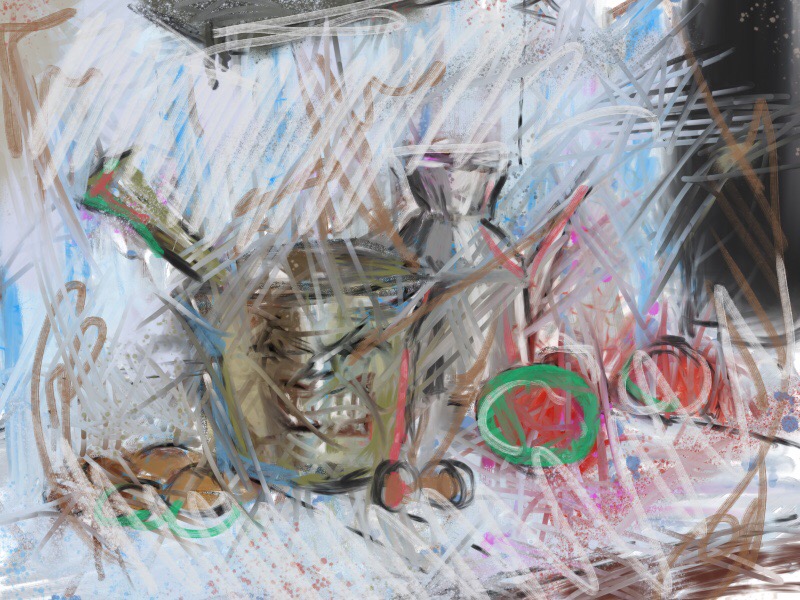
Non-Objective Art
Non-objective art is defined as having no recognizable subject matter. The starting point takes nothing from visual reality. Instead of drawing people, trees, buildings or any other observable things, non-objective artists use the elements of art as their subject; lines, shapes, forms, values, colors and textures. See these elements are used by Kandinsky in the painting below.
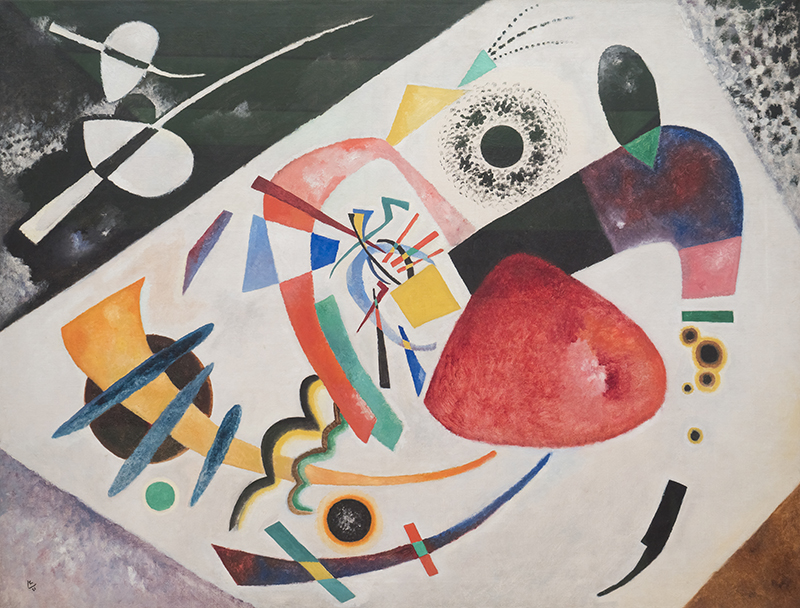
Non-objective art can be difficult to classify. Without ancillary information, the next image may appear to be non-objective as well. It is based on the same reference photo used for the cubist example. However, this artwork is only highly abstract and not non-objective. Having been reduced to flat, disconnected shapes one cannot, with certainty, identify any of the objects depicted.
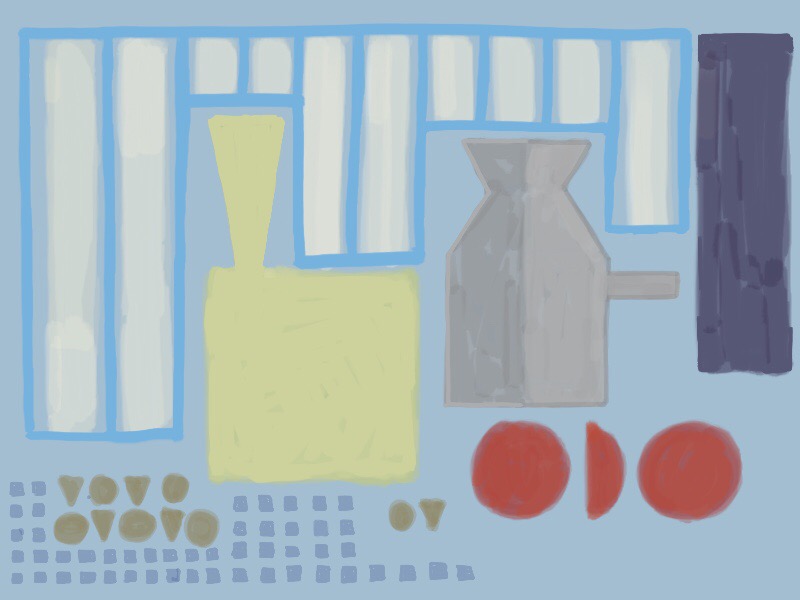
Conversely, a viewer may see an artwork that is non-objective but believe it to be abstract due to the imposition of their own creativity. All people are creative to varying degrees when compared with other animals.
Think about it. Have you ever seen a cloud that looked like something else? That's creativity. The same thing happens with non-objective art, to the chagrin of non-objective artists. People believe they see things that are not intended by the artist. For this reason, non-objective art is challenging to discern from abstract art.
Is the following artwork abstract or non-objective? How can you be sure?
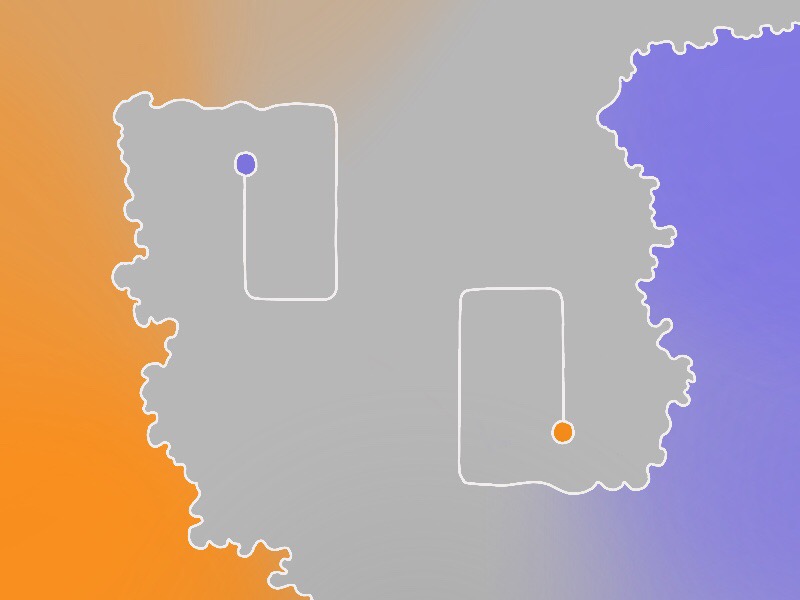
It is, in fact, meant as a non-objective artwork. Is it successful? Does it look like something you have seen before? If the image above is unique to the viewer, then it is a successful non-objective artwork.
In cases where we don't know the intent of the artist, it may be impossible to tell the difference between an abstract work or a non-objective one. But this isn't the point. We don't have to know to enjoy and appreciate the work.
No matter where the artist started, the goal of the end result is the same – to create an aesthetically successful work of art.
Conclusion
And this is the goal of any work that we create – to create something that didn't exist before that is beautiful, thought-provoking, or enriching in some way. It may be representational, abstract, or non-objective. But it's all art, and it can all be appreciated.
This should give us freedom. Freedom to create what we want and freedom from the critics that live within our minds. What are you going to create today?
How To Create Non Objective Art
Source: https://thevirtualinstructor.com/blog/abstract-non-objective-art
Posted by: blancharddeve1941.blogspot.com

0 Response to "How To Create Non Objective Art"
Post a Comment